Volunteering in Ecuador: Preserving the Amazon and Your Wallet
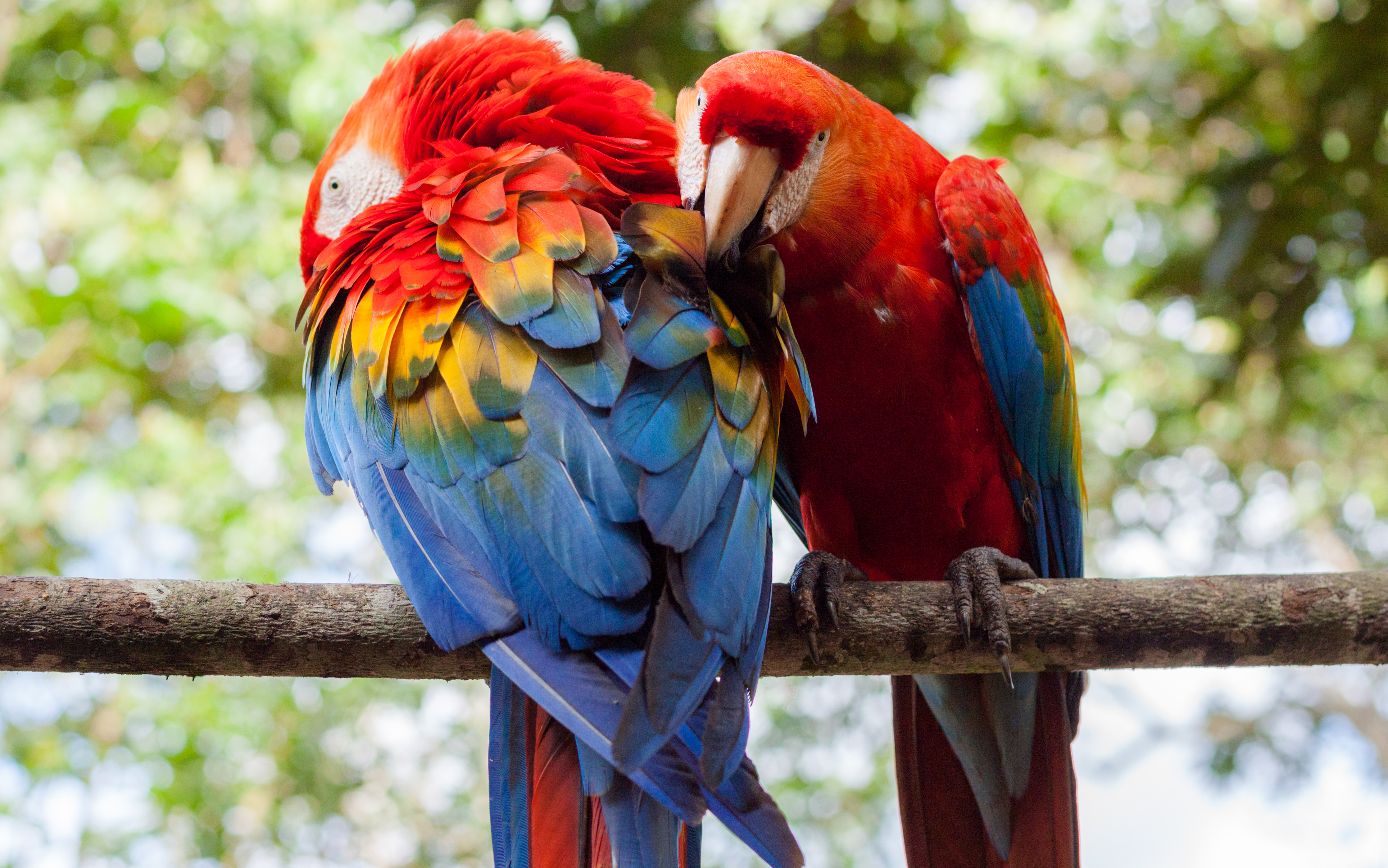
We had made plans to volunteer at an indigenous community in the Amazon. In this case, “plans” can be defined as texting a woman in Google-translated Spanish, ignoring a few strange chain messages from her, having her ask us three times when we’re coming, and then fruitlessly waiting for her to respond when we arrived at the meeting point.
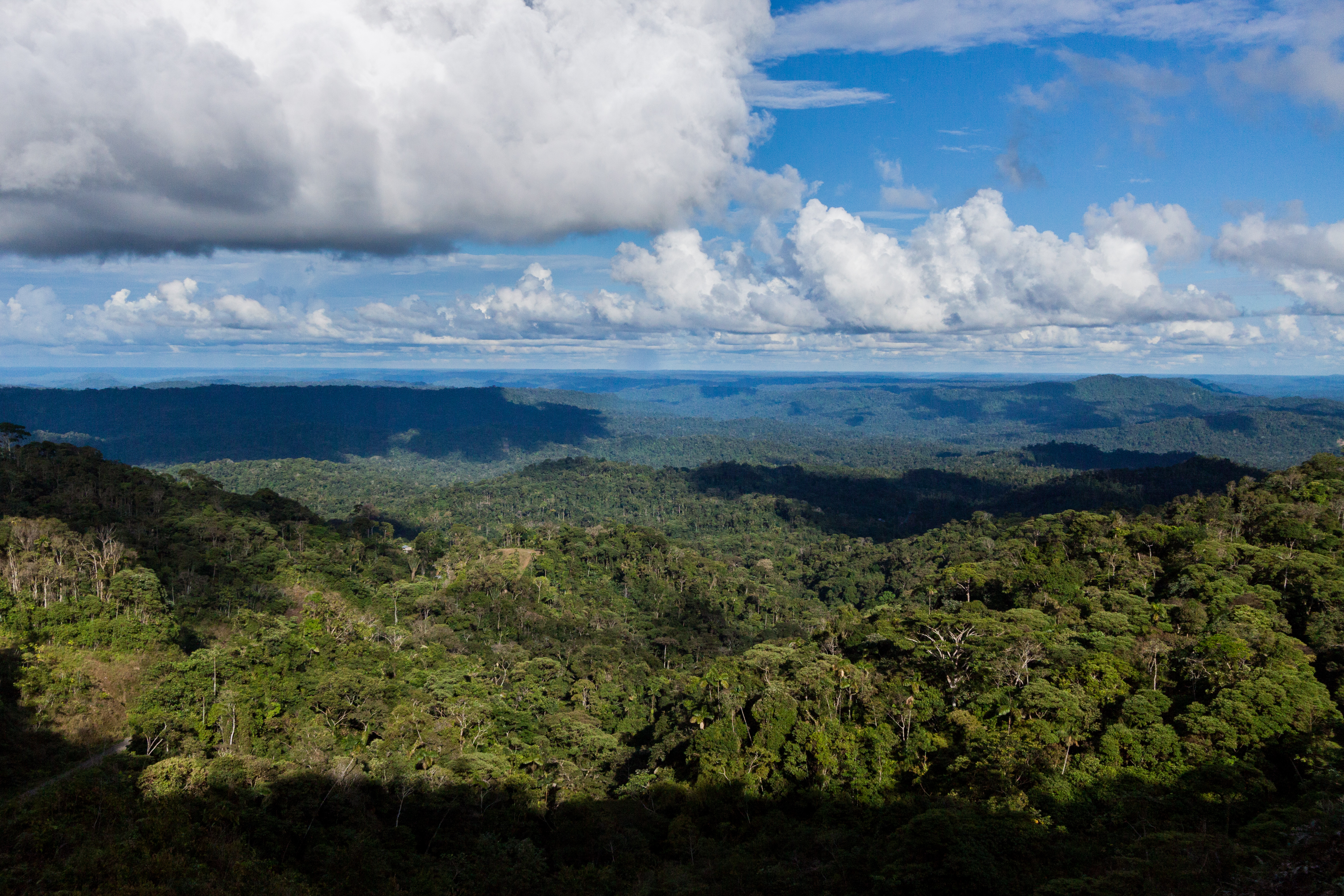
That was how we found ourselves without a plan in the small town of Puyo. Besides serving as a “gateway” to the Amazon jungle, Puyo doesn’t offer much, so we were eager to quickly come up with an idea for what to do next. We knew that at some point during our trip we wanted to volunteer at an animal sanctuary, and this seemed like the perfect opportunity.
Googling animal reserves in the area got us to Flavio from Sacha Yacu, and after a phone call, an hour and a half bus ride, and a half hour walk through the jungle, we found ourselves in the midst of the rainforest among a few wooden cabins. A dozen parrots greeted us with an “hola!”, a toucan came hopping up to our feet, squirrel monkeys stared at us from the trees, and dogs and cats lay lazily about in the sun.
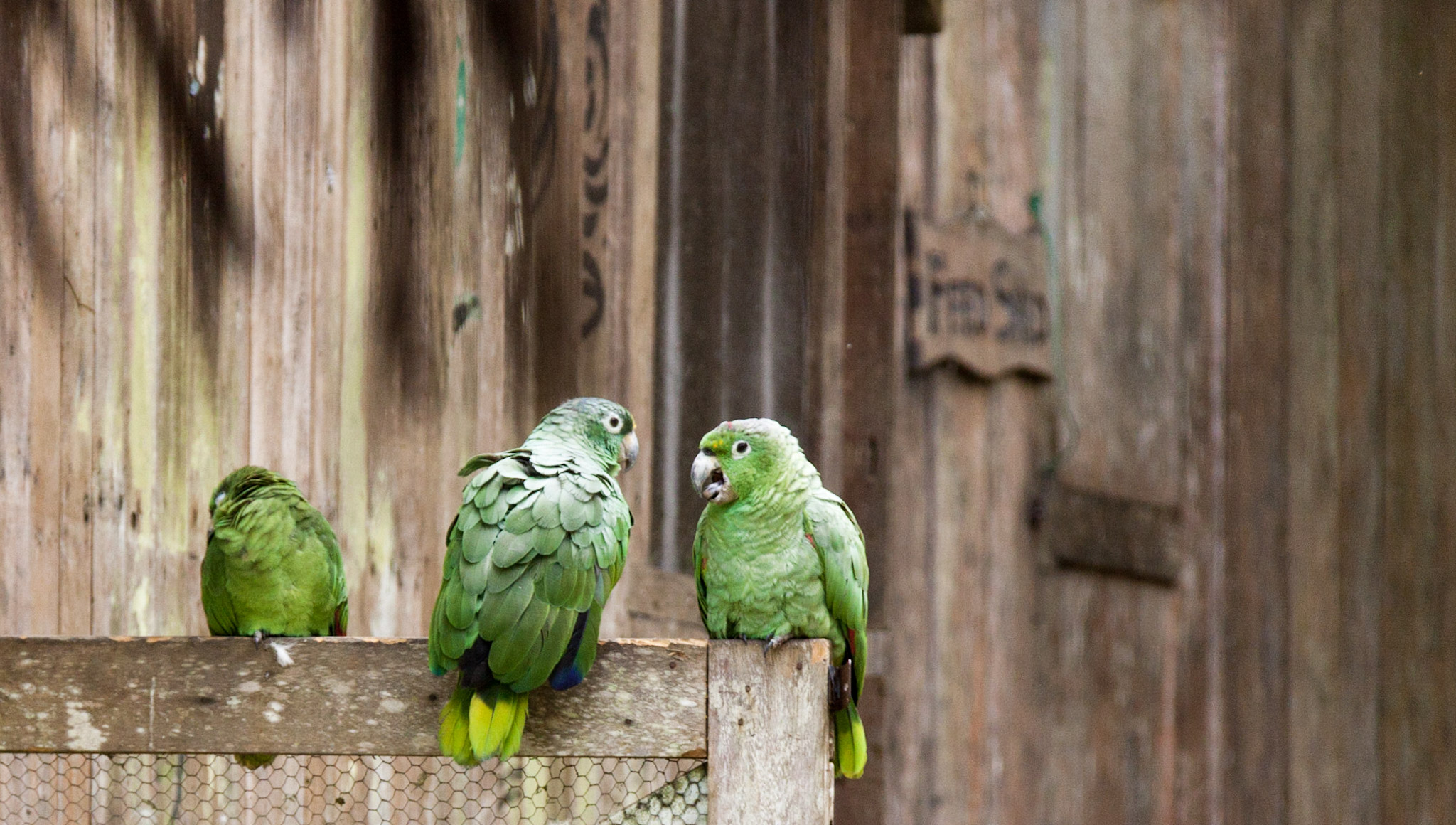

Wild Animal Rescue Center
The Sacha Yacu Wild Animal Rescue Center was founded 12 years ago by the Alvarez family, and works with the Ecuadorian Environmental Police to recover wild animals that are being kept as pets in the cities and return them to their natural habitat. The rescue center is spread across many square kilometers of the jungle and has 16 cages for different animals, as well as 17 macaws and other parrots that roam free around the cabins, always nagging for food on the kitchen steps beside the cats and dogs. Currently, the reserve has several different types of monkeys and parrots, a relentlessly attention-seeking toucan, a few cute but not-to-be-underestimated coatis, wild pigs, a margay (a smaller version of a leopard, but no less fierce), and turtles.
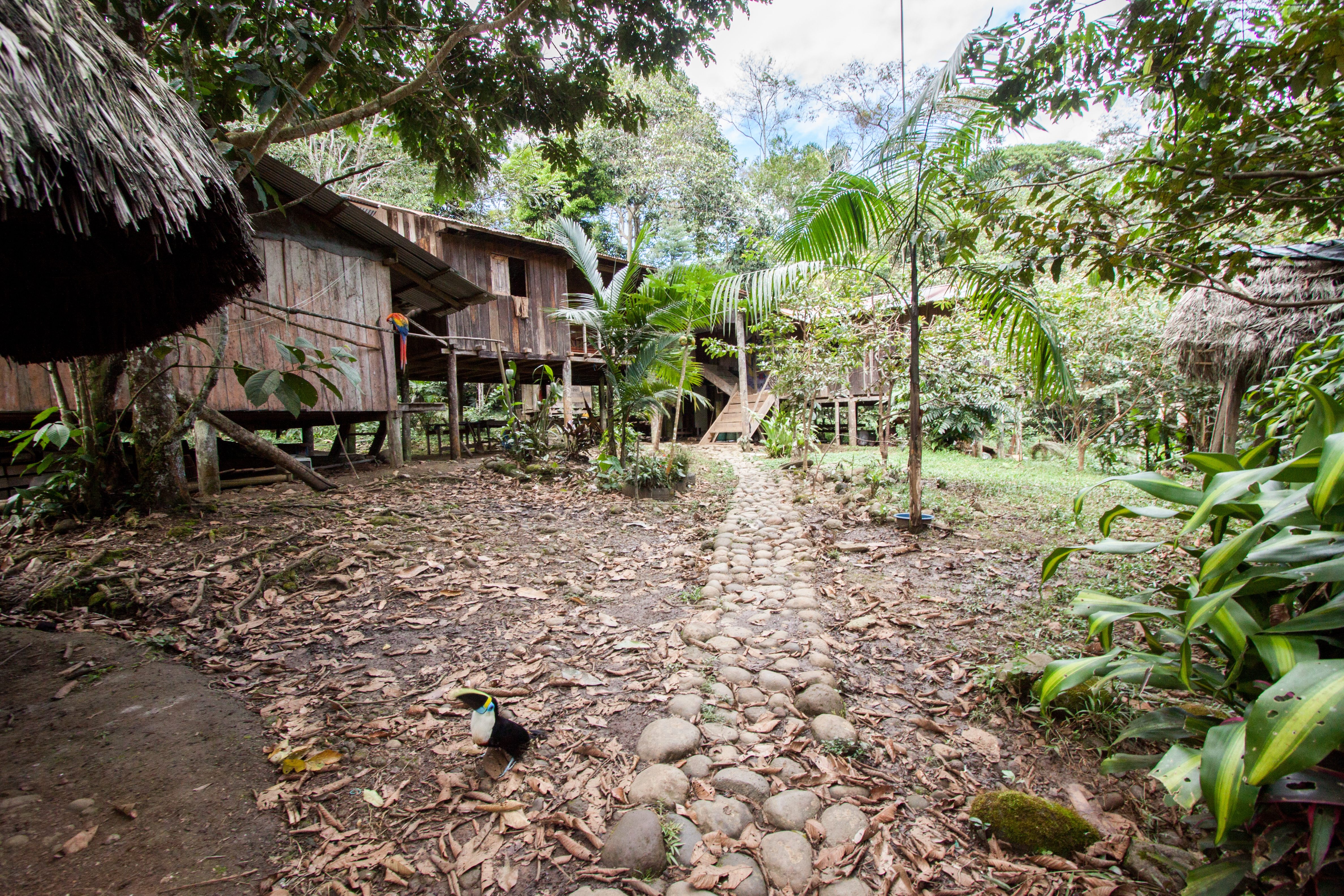
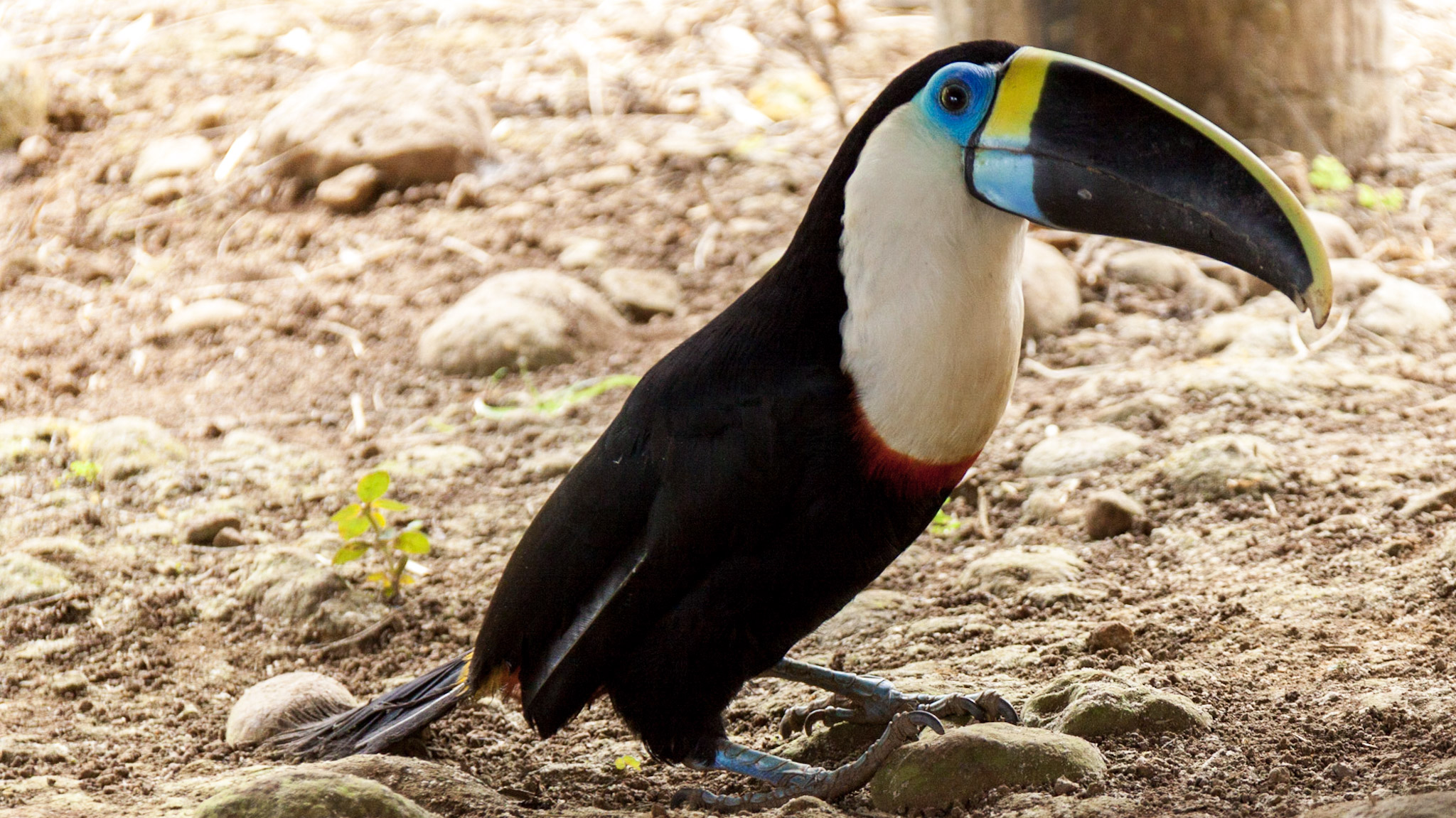
Volunteering at the Reserve
The five or six of us that were volunteering at the reserve would start each morning by either cleaning the cabins or preparing the food (mainly fruits and vegetables) for the animals in the feed shed. Then, after splitting into two groups – each of which was responsible for a different set of cages – we spent the rest of the morning cleaning the enclosures and setting the food out for the animals.
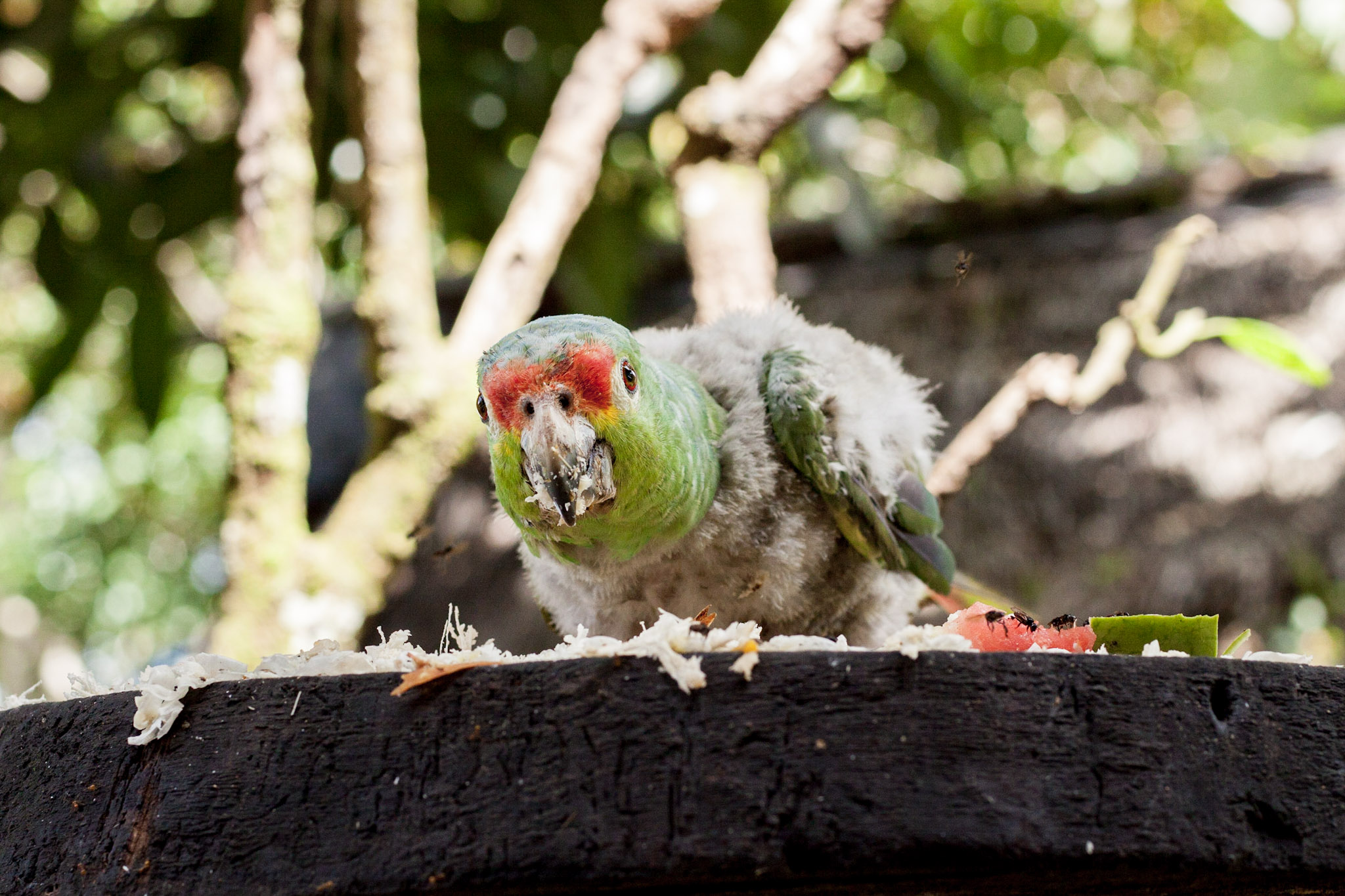
In the afternoons, we had a variety of unusual tasks. These included digging for worms in the mud and fishing with bamboo sticks in the piranha ponds (and feeding the fish to the margay afterwards), harvesting bananas, papayas, cocoa, and sugar cane, helping to build new cages, catching grasshoppers with our bare hands to feed to the monkeys and coatis, and hand-feeding the turtles who behaved like moody infants, refusing to eat unless you sat on them and held bananas to their mouths until your arms began to hurt.
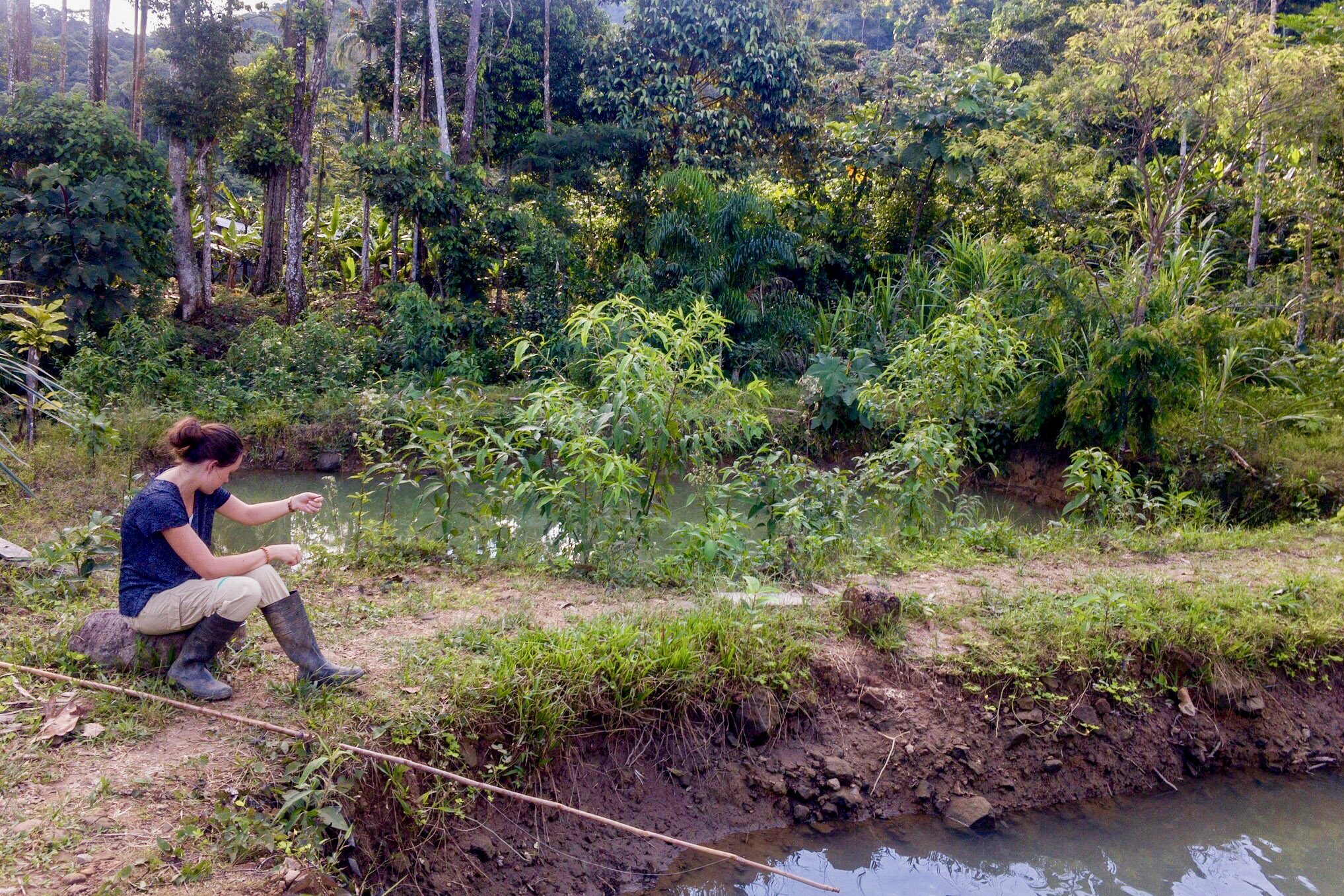
The work wasn’t easy. We would return at the end of each day dirty, wet, sweaty, and tired, but always with a story – whether it was about the monkey who stole your bracelet, the coati you had to return to its cage by letting her ride on your shoulder, or the parrot who had the nerve to lift the glasses from your head. With only two hours of electricity in the evenings, we gladly fell into our beds promptly at 8:30 pm every night, reflecting on all of the comically ridiculous, other-worldly things that happened that day.
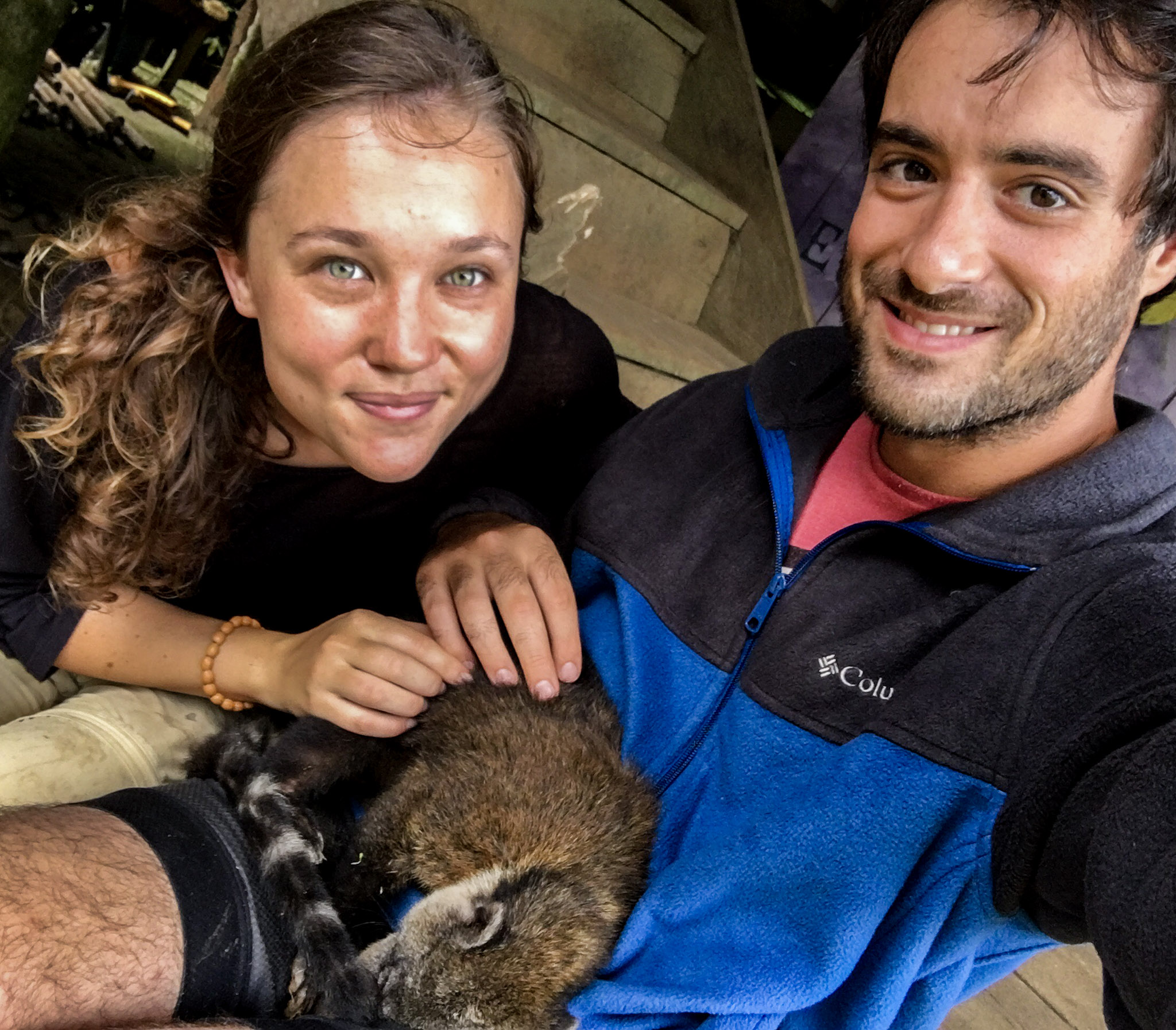
For $125/week, every volunteer gets accommodation and food on the reserve. The Rescue Center is non-profit, so all of the money goes to supplying the animals’ needs and maintaining the reserve. Fair warning: only do this if you are willing to work hard, abandon your internet addiction, and go with the flow.
Sometimes, you can lay peacefully on a hammock all afternoon, listening to the grasshoppers and petting the toucan, with a cat or dog on your lap eyeing the bird cautiously. Other times, you’ll be lugging heavy bags of bananas or long sticks of sugar cane, rejoicing in pulling a fish out of the water, chasing monkeys away from parrot food, wondering what to do about the giant tarantula in the kitchen, coming across a fat snake that you realize is actually a worm (not sure if I was relieved or not), precariously feeding grasshoppers to a ravenous coati, or digging a hole in the middle of a downpour.
The Best Way to Experience the Amazon
In our opinion, volunteering is absolutely the best way to experience the Amazon. Apart from saving hundreds of dollars on expensive lodges, you have a completely unique and authentic adventure.
When we were there, we witnessed the beauty of nature at its finest, but also the ways that humans are destroying it: a gigantic oil pipeline clearing everything in its path, animal traffickers capturing a macaw the day after it flew free (luckily the indigenous people stopped them and returned the parrot to Sacha Yacu, but not before its feathers were cut), and the cutting down of trees in favor of roads. It may not seem like much, but every person that chooses to help – even for a short while – in protecting the environment instead of destroying it is making a difference.

Our two weeks at Sacha Yacu were truly like no other experience that no amount of journal entries, photographs, or blog posts could hope to capture – the epitome of a “you-had-to-be-there” series of moments.
Worth it? If you want a real, one-of-a-kind experience in the Amazon, we couldn’t recommend Sacha Yacu enough. The family is constantly looking for volunteers to help them with all of the work on the reserve, and your time there will be well spent and meaningful.
What to bring: clothes you don’t care about ruining, mosquito net, rubber boots (if you don’t have any you can borrow some there), camera, something warm to sleep in, a book to read in your spare time.
– Iris & Roi
We want to hear your story! Have you volunteered in Ecuador? Did you visit the Amazon? Tell us about it in the comments.
3 thoughts on “Volunteering in Ecuador: Preserving the Amazon and Your Wallet”
You must be logged in to post a comment.
Great posts. I’m just finishing up my own posts about my Sacha Yacu experiences. Did you get to experience their sugar cane liquor, Puro Puyo. It wasn’t quite as bad as the chica Amazonia, but still not great.
Thanks! Yeah, we were talked into trying Puro Puyo, it was definitely interesting haha